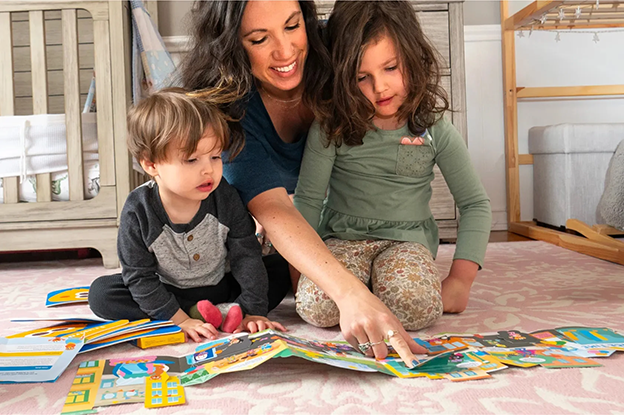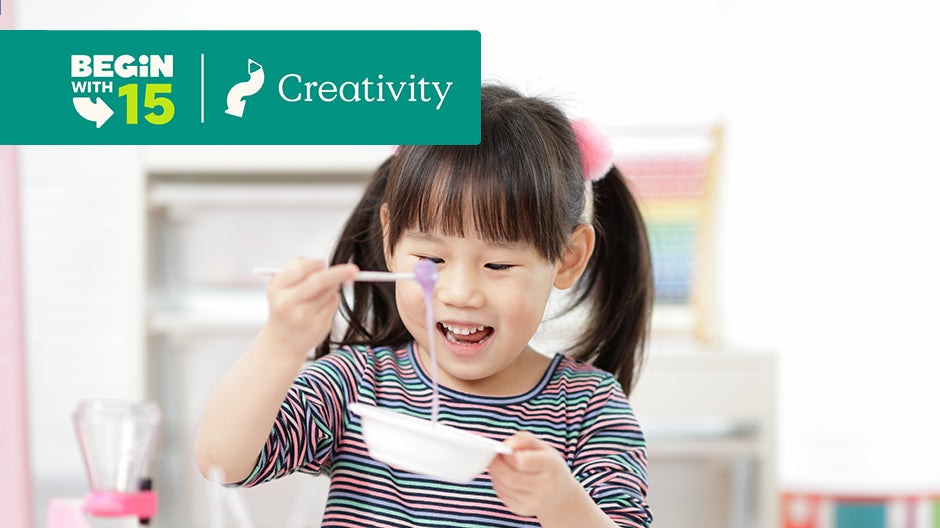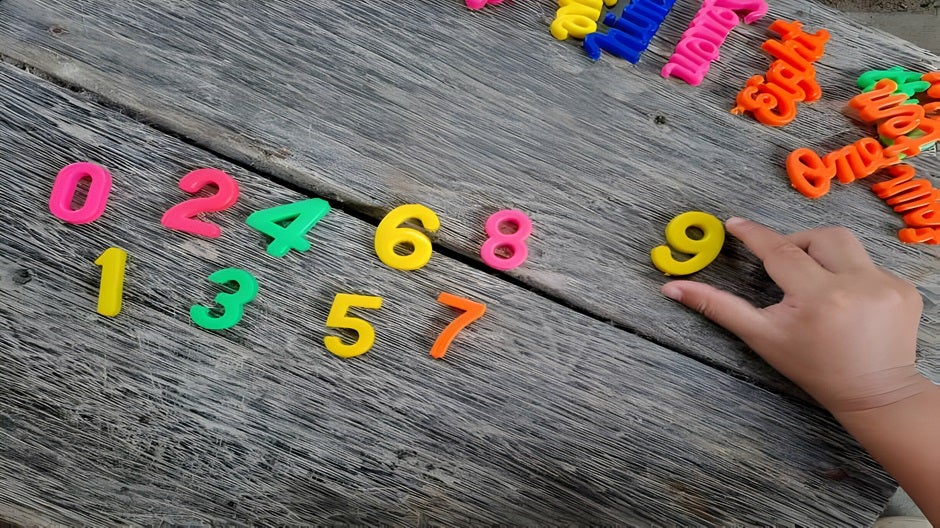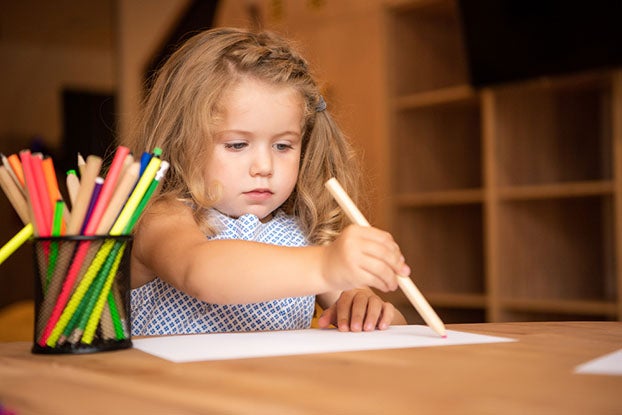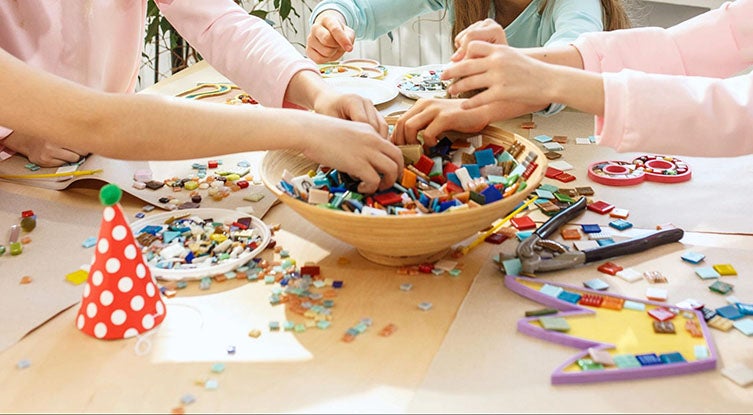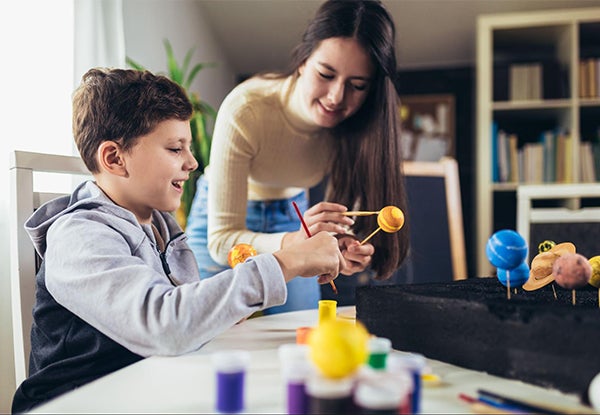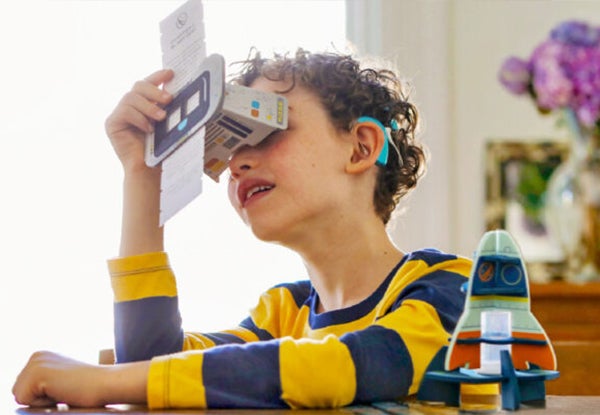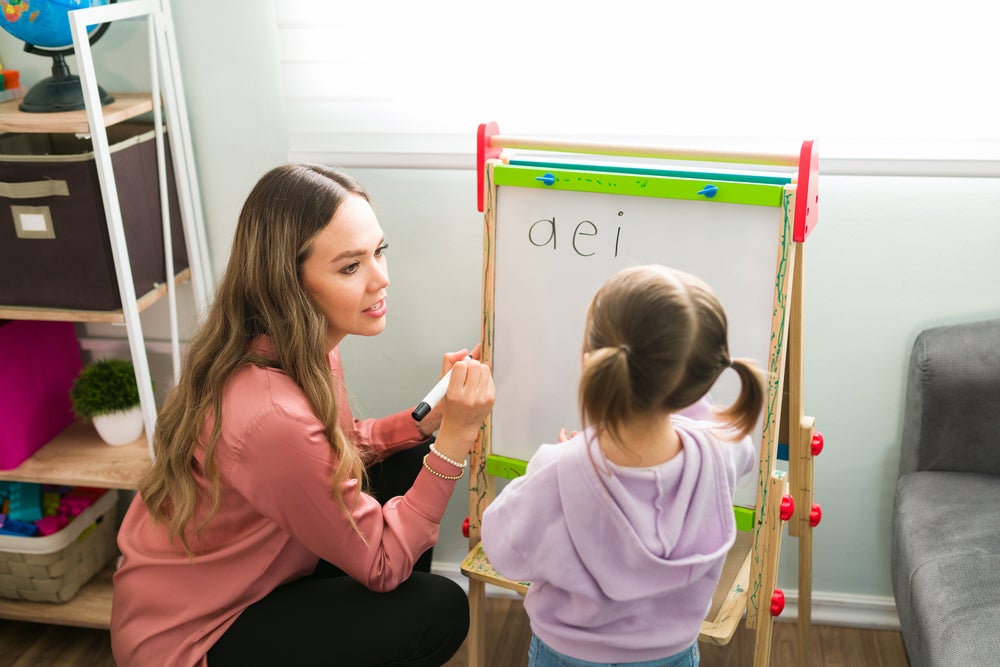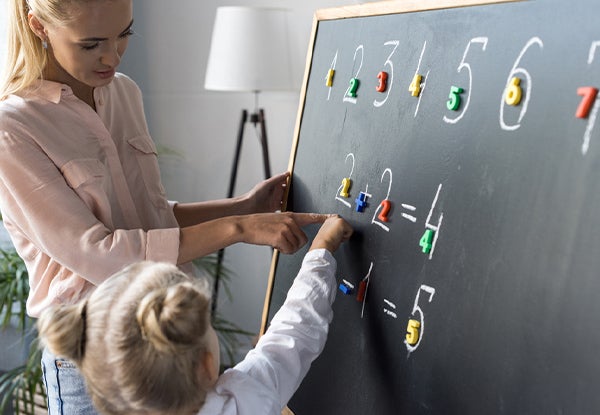Helping your child develop kindergarten reading comprehension is one of the best things you can do for the learning adventure ahead of them.
Improving vocabulary and comprehension skills lay the foundation for all the reading to come, while also helping your child learn how to apply new knowledge to what they already know.
In this article, we discuss strategies you can use to build your child’s reading comprehension for a lifetime of reading fun!
Table of Contents
- Strategies for Building Kindergarten Reading Comprehension
- Tips for Improving Kindergarten Reading Comprehension
Strategies for Building Kindergarten Reading Comprehension

Read Aloud Together Every Day
One of the best things you can do to build your child’s kindergarten reading comprehension is to read aloud together every day. Sit on the couch or in your favorite chair with your young reader and spend 15 to 20 minutes reading a variety of books.
This will help your child:
- Recognize letters
- Understand how those letters combine to form words
- Internalize new words
- Comprehend story structure
- Learn about the world
Reading aloud is also a great way to share some quality one-on-one cuddle time with your child before they get too big for your lap!
Let Them See You Read

Kids naturally want to do what their parents do. So a great way to motivate your child to want to read—and to build their kindergarten reading comprehension in the process—is to let them see you read.
Carve a few minutes out of your busy day to sit in the living room or at the kitchen table with a magazine or book and do your own independent reading. Modeling this behavior shows your child how important it is and makes it easier for them to build the habit themselves.
As you do your independent reading, be prepared to answer the question, “What are you reading?”. And if that question does come up, take the opportunity to engage with your child to satisfy their curiosity and to discuss what you’re reading (at an age-appropriate level, of course).
Practice Kindergarten Reading Comprehension Activities
As your child grows and their reading level improves, they’ll read for longer uninterrupted stretches at a time. In the early stages, however, it’s good to practice kindergarten reading comprehension activities as you read.
Some of the most effective activities are:
- Thinking aloud
- Asking questions
- Making predictions
- Visualizing
Thinking aloud: As you read, let your child know what you’re thinking and feeling.
For example, if a character loses their favorite toy, tell your child, “She must feel sad that she lost her toy. I’d like to help her find it, wouldn’t you?”
Asking questions: As part of thinking aloud, ask lots of questions—those that don’t require an answer and those that do.
For example, you may say, “Oh, my! What’s going to happen now?” and not expect a response. Or you could say, “What do you think is going to happen now?” and wait for an answer.
Making predictions: As you read the story, take a few moments to make predictions about what’s going to happen next. Then ask your child what they think will happen next.
Keep in mind that there’s no right or wrong answer, and the response you get from your child may be completely outside the framework of the story. With time and practice, they’ll learn to anticipate the outcome based on the text they’re reading.
Visualizing: Encourage your child to create a mental image of the story as they read.
Ask them what they think the character looks like in a situation other than the story (maybe even have them draw a picture). Ask them what the weather feels like. Ask them what scents they might smell if they were the main character. Ask them what they think the character is feeling.
Building a mental image like this can help your young reader engage with the text and find joy in the reading process.
Read About the Real World
While it’s great to read make-believe stories with your child, read about the real world as well.
Find age-appropriate non-fiction books that discuss things your child is interested in (e.g., space, dinosaurs, animals, trains, the list goes on and on) as well as new topics that might spark their imagination.
Connect Reading with What They See
Find opportunities to connect reading with what they see in the world around them. For example, if you read a book about bunnies and you see a bunny in the wild while running errands, point out the animal and bring up the book.
This helps your child make personal connections between what they read, what they know, and the real world.
Tips for Improving Kindergarten Reading Comprehension

Keep Things Light and Lively
The main goal of reading with your child is to stimulate their curiosity and cultivate a desire to learn about new things and explore the world around them.
To that end, keep things as light and lively as possible, and try to make everything you do with reading fun and enjoyable.
Conversations and activities about books shouldn’t turn into quizzes and long lists of questions. They should be a back-and-forth between you and your child about what you both enjoyed about the book, how it made you feel, and lessons you can learn.
So, as you try the strategies and tips in this article, don’t make it about performance, facts, or knowledge. Focus, instead, on the fun you and they can have with a really good book.
Encourage Independent Reading
Reading aloud with your child every day—and modeling good reading skills—goes a long way toward developing kindergarten reading comprehension. But soon, they’re going to need to be able to exhibit these skills on their own without your help.
That’s where independent reading comes in. Independent reading gives your child the opportunity to practice what they’ve learned from you and to strengthen these skills even further.
Making independent reading as fun as possible for your child involves two variables: space and time.
To encourage your child to read on their own, dedicate a space just for that activity. Make the space comfy, and store all the books in that area so your child can reach them whenever they want. Then schedule at least one 15-minute block for quiet time when you both settle in to read.
Choose a Variety of Topics
To stimulate your child’s love of reading, choose topics that they’re already interested in. Use these books as a way to motivate your child to get in the habit of reading every day.
For example, if your child is fascinated by space, find age-appropriate fiction books set in space or nonfiction books with lots of pictures that discuss the planets, the stars, and other things your child might see in the night sky.
To further encourage your child’s love of reading, choose brand new topics they may never have heard of. At that age, there’s so much that’s new and wondrous in the world, and books are the ideal way to spark their curiosity and introduce them to their next favorite thing.
Share Family Stories
Building kindergarten reading comprehension doesn’t have to happen only during your scheduled reading times. It can happen any time!
When you’re stuck in traffic or waiting in line, share a family story with your child. Maybe it’s the time you got to see the Grand Canyon or visit the seashore.
Whatever the story might be, don’t just relate the facts; use vivid language and make the story as exciting as possible. Don’t be surprised if your child has questions when you’re done, and take the opportunity to keep the discussion going.
Then if there’s time, ask your child to tell you their favorite family story.
Connect New and Existing Knowledge
It’s never too early to encourage your child to connect the knowledge they’re learning with the knowledge that they already have. This is often called applying and transferring.
For example, if the character in the story was afraid to try a new food but then found that they really liked it once they did, you can apply that directly to your child’s aversion to trying new foods.
Then you can transfer that same lesson to trying other new things and how your child might enjoy those, too.
Make Reading Fun with HOMER by Begin
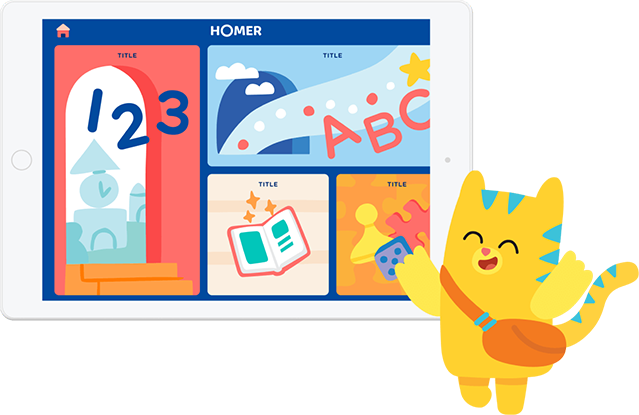
When it comes to kindergarten reading comprehension, fun is the secret to success. Make up games, incorporate hands-on activities, show them how much you enjoy reading, and harness the power of existing tools and programs, like those offered by Begin.
Our learning products—including the HOMER app—and parent resources are designed to inspire your young reader to build a solid foundation of reading comprehension for kindergarten, 1st grade, 2nd grade, and beyond.
HOMER’s four-step approach (Introduce, Practice, Apply, Transfer) goes beyond rote memorization to build confidence, make connections with other subjects, and foster a life-long love for reading.
For more information on everything we offer and why families love learning with Begin, visit BeginLearning.com today.
